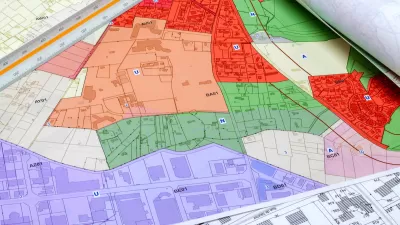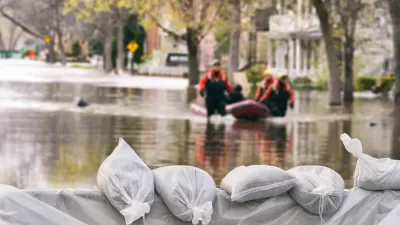Whether climate change 'caused' the California fires is a red herring, argues disaster resiliency expert Dave Hampton, in this first part in a series on lessons from the California fires about climate change.

Media reporting on the relationship between the recent devastating wild fires in California and climate change have demonstrated the confusion between attribution and contribution. While disasters like fires can never be directly attributed to climate change, Dave Hampton, a natural disaster resiliency specialist, argues there is little doubt climate change is:
. . . creating the preconditions for them to occur or to be more intense or prolonged – such as the higher winds and an overall drier season that have driven the Skirball and Thomas fires, threatening nearly 200,000 acres in California . . . [The] point is, rather, not to get too hung up on causation for particular events, but rather to acknowledge the changing climate as a driver and contributor to making natural events events such as wildfires, droughts, and flooding more severe.
Accordingly, planning for the 'wildland-urban interface' will require heightened and more proactive measures than in the past. For more, see source article.
FULL STORY: Lessons from the California Fires: Climate Change Impacts and Proactive Planning (part 1)

Alabama: Trump Terminates Settlements for Black Communities Harmed By Raw Sewage
Trump deemed the landmark civil rights agreement “illegal DEI and environmental justice policy.”

Planetizen Federal Action Tracker
A weekly monitor of how Trump’s orders and actions are impacting planners and planning in America.

Why Should We Subsidize Public Transportation?
Many public transit agencies face financial stress due to rising costs, declining fare revenue, and declining subsidies. Transit advocates must provide a strong business case for increasing public transit funding.

Understanding Road Diets
An explainer from Momentum highlights the advantages of reducing vehicle lanes in favor of more bike, transit, and pedestrian infrastructure.

New California Law Regulates Warehouse Pollution
A new law tightens building and emissions regulations for large distribution warehouses to mitigate air pollution and traffic in surrounding communities.

Phoenix Announces Opening Date for Light Rail Extension
The South Central extension will connect South Phoenix to downtown and other major hubs starting on June 7.
Urban Design for Planners 1: Software Tools
This six-course series explores essential urban design concepts using open source software and equips planners with the tools they need to participate fully in the urban design process.
Planning for Universal Design
Learn the tools for implementing Universal Design in planning regulations.
Caltrans
Smith Gee Studio
Institute for Housing and Urban Development Studies (IHS)
City of Grandview
Harvard GSD Executive Education
Toledo-Lucas County Plan Commissions
Salt Lake City
NYU Wagner Graduate School of Public Service





























